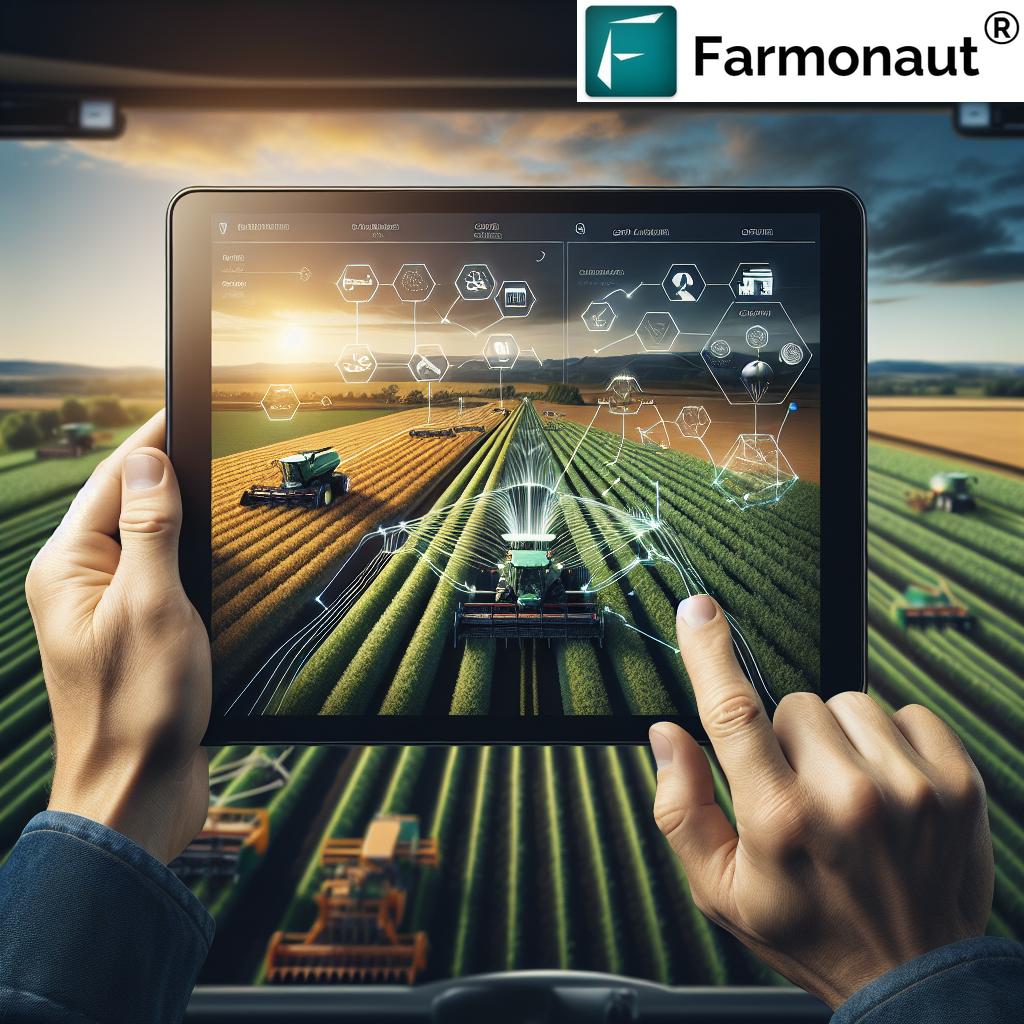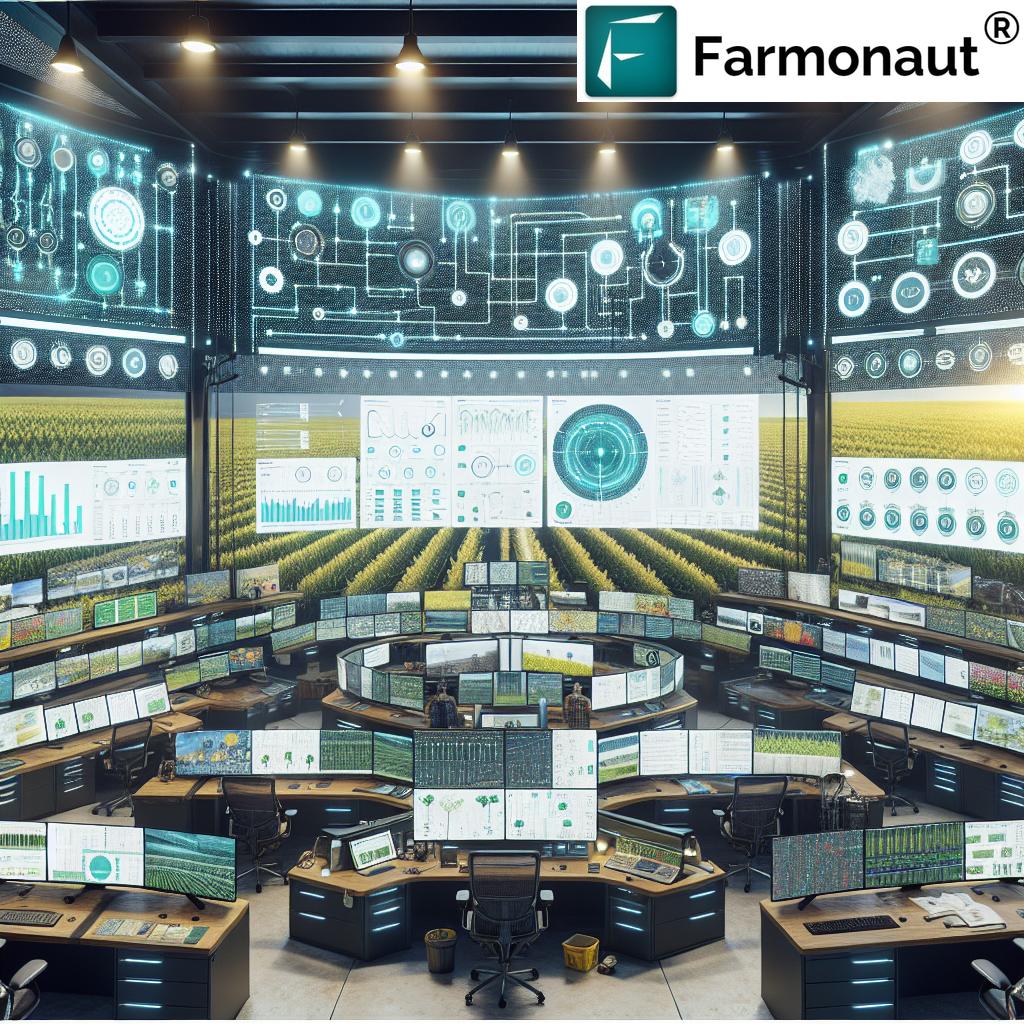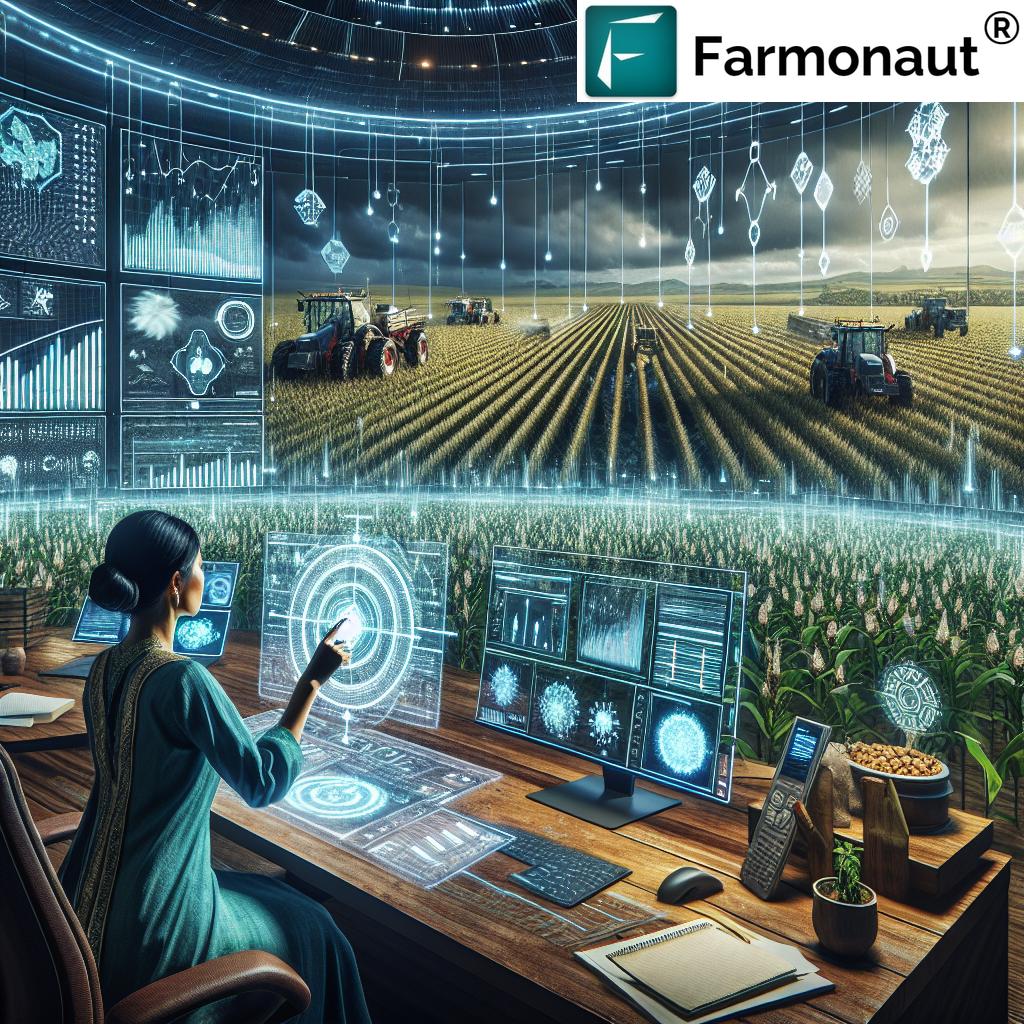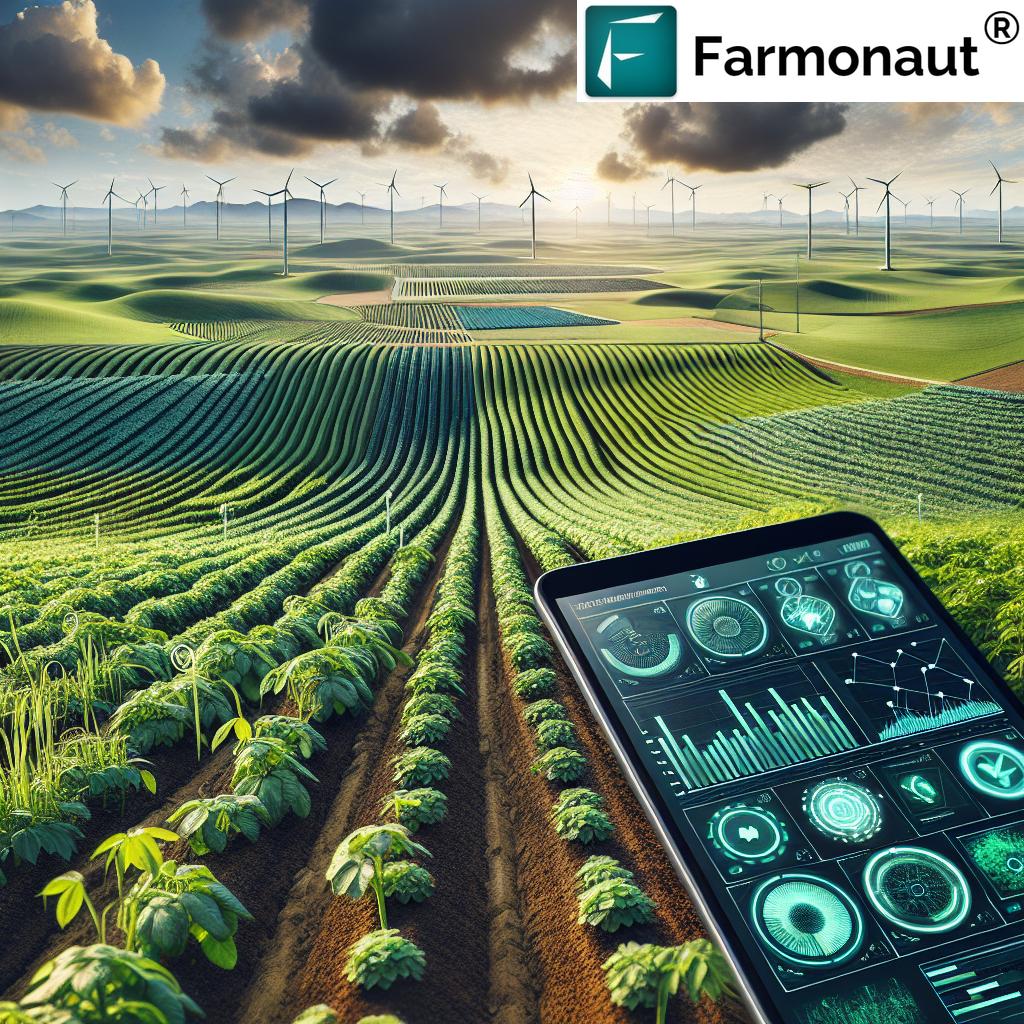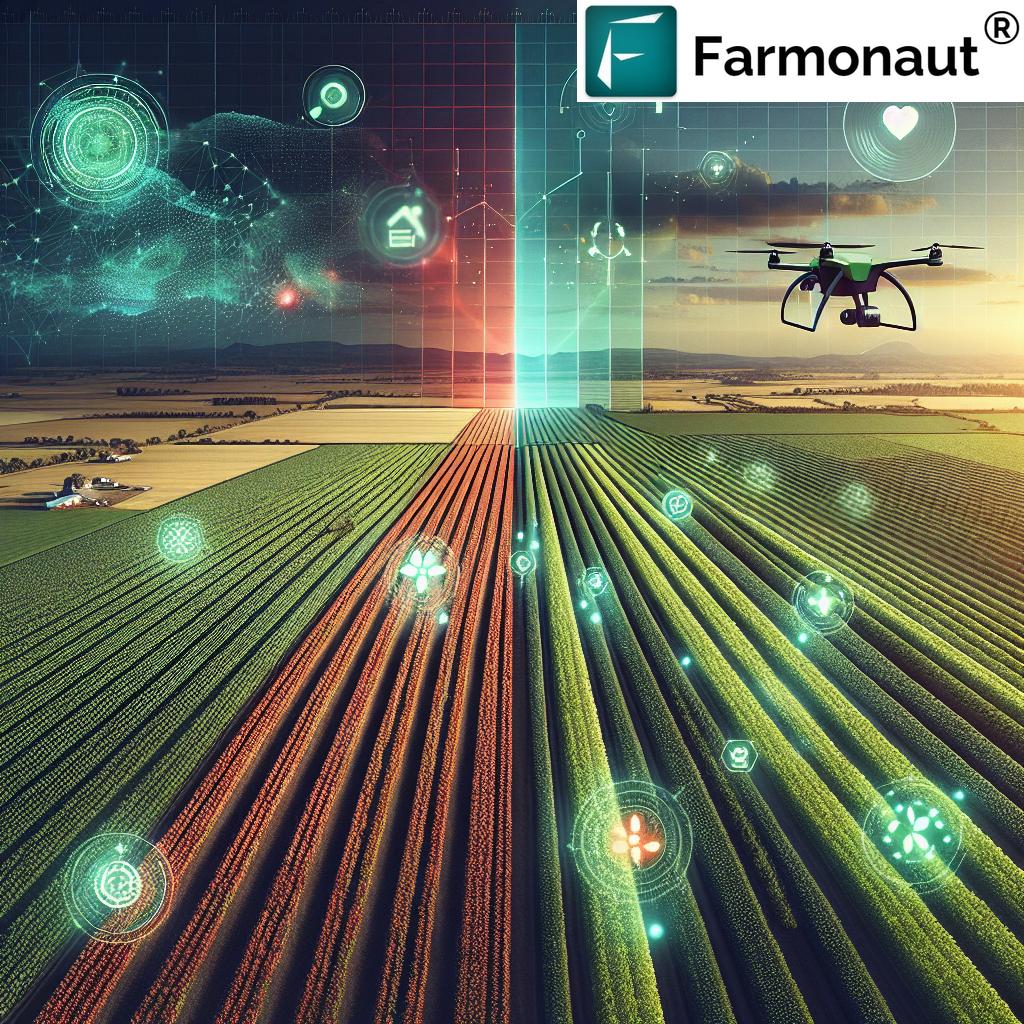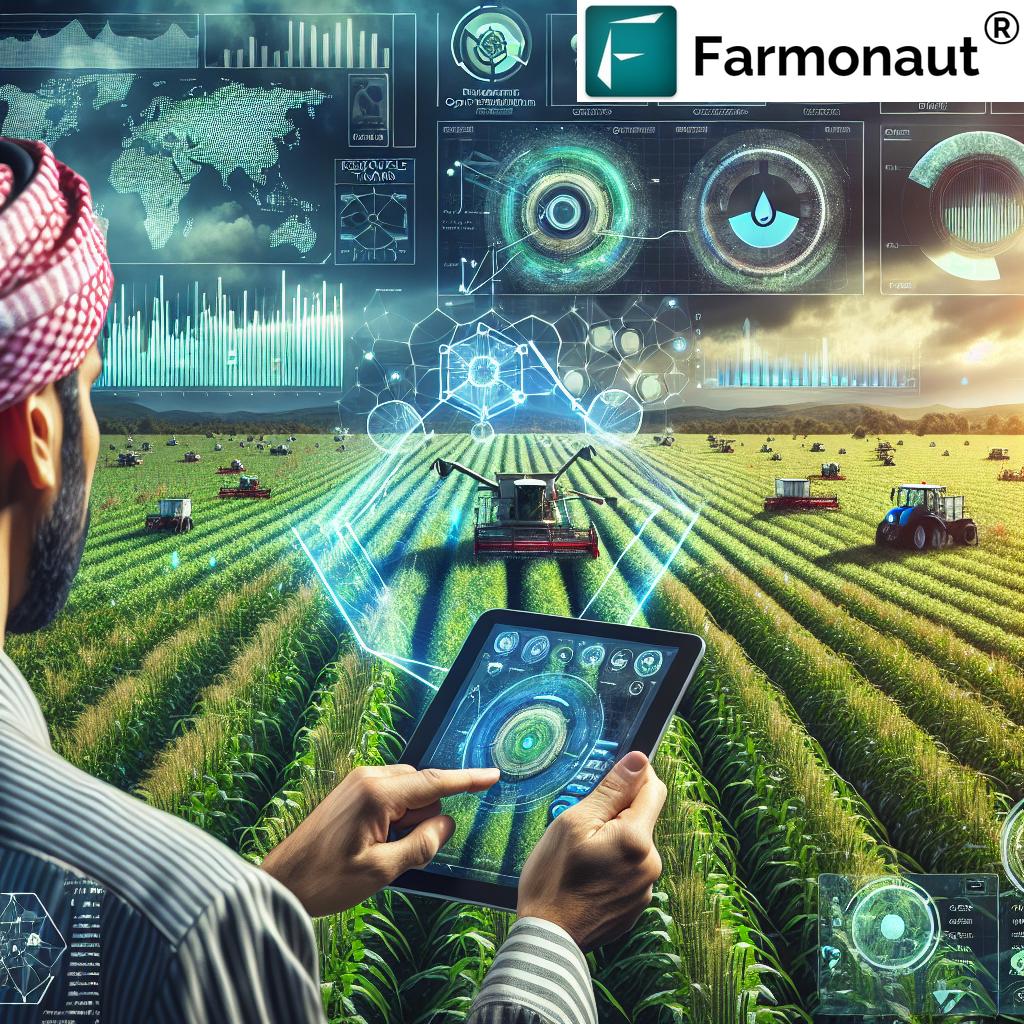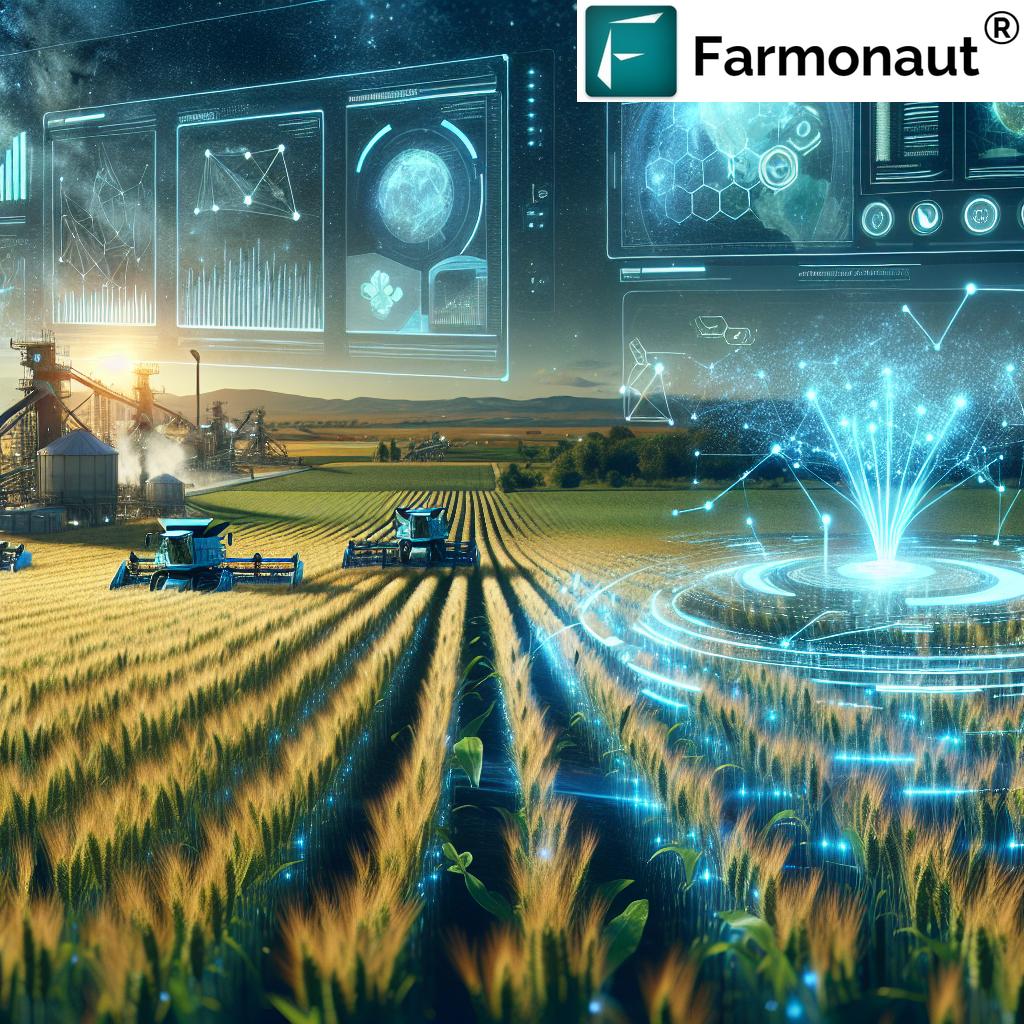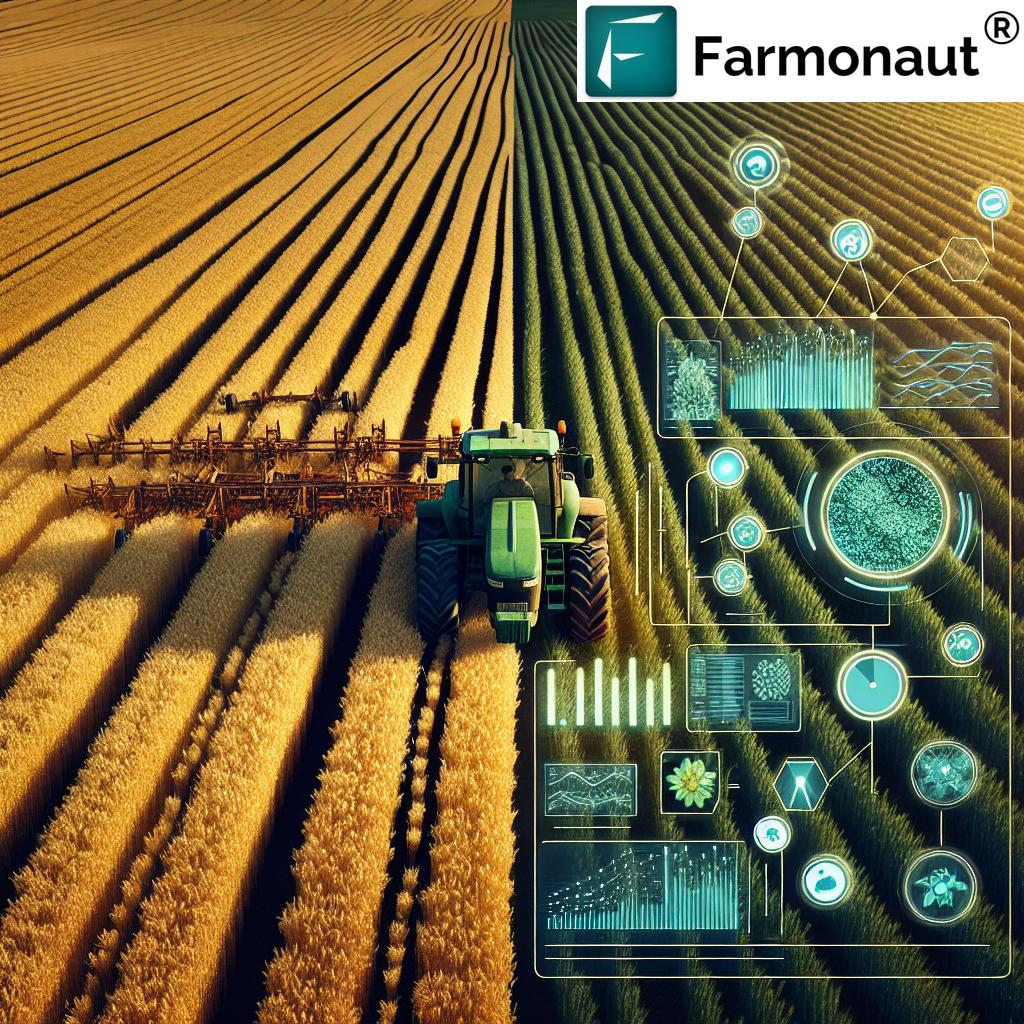Table of Contents
- Introduction: The Shocking Truth Behind Precision Farming Costs
- Defining Precision Farming: Modern Technology in Agriculture
- Initial Investment Costs of Precision Farming
- Ongoing Operational Expenses: What to Expect Annually
- Cost Savings, Efficiency & Return on Investment (ROI) with Precision Agriculture
- Custom Service Rates: Precision Farming Solutions Without the Ownership Costs
- Cost of Precision Farming: Key Factors That Influence Your Investment
- Farmonaut: Affordable, Data-Driven Precision Agriculture for Every Farmer
- Comparative Cost-Benefit Table: Traditional vs Precision Agriculture
- Frequently Asked Questions: Precision Farming Cost & Adoption
- Conclusion: Making a Smart, Sustainable Investment in Advanced Agriculture
“Precision farming software can reduce input costs by up to 15% while increasing crop yields by 10-20%.”
How Much Does Precision Farming Cost? Shocking Truth!
Precision farming is rapidly reshaping the future of agriculture. As we transition from traditional techniques to advanced, data-driven solutions—such as precision farming software, GPS guidance systems, IoT sensors, and drones—farmers are unlocking new levels of yield, efficiency, and sustainability. But how much does it really cost to invest in precision agriculture technology? Are the expenses justified by the improvements in productivity and management?
In this comprehensive, expertly-researched guide, we’ll explore the real-world costs and immense benefits of modern precision farming. With detailed breakdowns of initial and operational expenses, as well as the unique advantages of solutions like Farmonaut, you’ll gain actionable insights to make smarter investments—no exaggeration or unrealistic claims, just the facts that matter for your agribusiness.
Defining Precision Farming: Modern Technology in Agriculture
Precision farming (sometimes called precision agriculture) represents the integration of advanced technologies—such as GPS guidance, IoT sensors, drones, and cloud-based software—into traditional farming practices. The goal? To optimize, automate, and inform every aspect of farm management for enhanced productivity, reduced waste, and greater sustainability.
Specifically, precision agriculture technology enables farmers to respond to variations in soil, weather, and crop health on a micro-scale—often at the level of individual meters within a field. By leveraging detailed farm data analytics and tools such as agricultural yield monitoring and variable rate technology agriculture (VRT), farms can boost outputs while cutting costs on water, fertilizer, and other inputs.
- Precision farming software and apps: For data collection, analysis, and informed decision-making.
- GPS guidance systems for farmers: Automate and optimize equipment movement and operations.
- IoT sensors in agriculture: Enable real-time field monitoring of soil moisture, nutrients, and environmental factors.
- Drones for crop scouting: Provide aerial imagery for scouting pests, disease outbreaks, and crop vigor.
As we’ll detail, harnessing these advanced systems involves various costs, but the rewards are significant—including increased yields, lower expenses, and improved farm sustainability.
Initial Investment Costs of Precision Farming: Equipment, Software, and Infrastructure
1. GPS Guidance Systems for Farmers
At the core of many precision agriculture operations are GPS-enabled auto-steering and guidance systems. These devices eliminate overlaps, ensure perfect plant row alignment, and help minimize waste of time, seed, and fuel.
- Entry-level guidance systems typically cost $5,000 to $10,000.
- Advanced integrated, RTK (real-time kinematic) auto-steering systems can range $16,000 to $20,000, but offer centimeter-level accuracy for premium operations.
Costs will vary depending on brand, features, and compatibility with existing tractors and equipment.
2. Agricultural Yield Monitors and Data Collection Devices
Yield monitors are essential tools for collecting harvest data and enabling detailed yield mapping and analysis.
-
Typical yield monitor cost: $3,000 to $5,000 per unit.
(Source)
3. Drones for Crop Scouting and Aerial Imagery
Drones are revolutionizing crop scouting, plant counting, and aerial imagery collection. They help identify stress, disease, and nutrient deficiencies rapidly, saving both time and labor.
- Drone acquisition cost: $2,000 to $10,000 depending on features and image analysis capabilities. (Source)
4. IoT Sensors in Agriculture: Soil, Weather, and Crop Monitoring
Deploying IoT sensor systems on-farm enables round-the-clock monitoring of critical parameters:
- Soil moisture sensors
- Temperature and humidity sensors
- Nutrient level sensors
Basic sensor nodes can start at $100 per sensor; comprehensive monitoring platforms can cost several thousand dollars for installation and wireless infrastructure across large field plots.
5. Precision Farming Software, Cloud Platforms & Data Analytics
From field maps to crop scheduling and farm data analytics, software is vital for maximizing the value of precision farming. Modern solutions often operate “as a service,” charging annual or tiered subscription fees:
- Cost of precision agriculture software: $500 to $10,000 annually, depending on the software’s depth, features, and ability to scale with farm size.
Platforms now offer satellite-driven real-time monitoring, predictive analytics, and AI-powered advisory, further boosting yields and savings.
Summary Table: Estimated Initial Investment Costs (2024)
| Component | Estimated Cost (USD) | Purpose/Benefit |
|---|---|---|
| GPS Guidance Systems | $5,000 – $20,000 | Automated steering, minimize overlap, reduce fuel/labor |
| Yield Monitors | $3,000 – $5,000 | Collect yield data for analysis |
| Drones (Aerial Imagery) | $2,000 – $10,000 | Crop scouting, pest/disease monitoring |
| IoT Sensors (Soil, Weather, Nutrient) | $100+ per sensor; $5,000+ per comprehensive system | Continuous soil and environment monitoring |
| Precision Software/Cloud Analytics | $500 – $10,000/annual | Data management, VRT, forecasting, decision support |
For farms of varying sizes, these investments can be phased in. Some farmers may begin with basic GPS guidance systems and expand to drones and sensor networks as budgets allow.
Don’t want to invest in every hardware component? Some advanced solutions, like Farmonaut, provide affordable, satellite-based crop health and farm management with no need for costly sensor hardware or field installations—see more in the Farmonaut section below.
Ongoing Operational Expenses: What to Expect Annually
Achieving maximum value from your investment in precision agriculture technology means budgeting for regular operational costs. These include:
1. Maintenance, Repairs, and Calibration
- Annual maintenance spans calibration, software updates, sensor cleaning, and mechanical repairs.
- Yearly cost: Typically 5% to 10% of equipment value. For a $20,000 investment, budget $1,000–$2,000 per year.
2. Software Subscriptions, Cloud Services & Data Storage
- Precision farming software providers operate on an annual/tiered subscription model.
- Annual fees: $2,000 to $15,000, depending on farm size, platform features, and amount of data processed.
Cloud platforms enable secure, scalable data analytics, often with variable pricing linked to the number of acres monitored or frequency of satellite imagery updates.
3. Training, Support & Staff Upskilling
- As technology adoption accelerates, proper training ensures effective implementation for agribusiness teams and family-run farms alike.
- Training costs: $200 to $500 per person. Some providers include basic support, but advanced or continuous training is highly recommended for maximum ROI.
4. Additional Variable Operational Expenses
- Connectivity and data transfer for rural locations may require additional infrastructure (private radio/cellular or satcom networks).
- Premium analytics, drone crop scouting services, on-demand aerial surveys, and expert advisory (such as those powered by AI, satellite, or blockchain) have their own annual charges or per-use fees.
“GPS guidance systems in agriculture can save farmers approximately 10% on fuel and labor expenses annually.”
Cost Savings, Efficiency & Return on Investment (ROI) with Precision Agriculture
Despite the upfront cost of precision farming equipment and annual operational expenses, numerous studies and farmer testimonials highlight significant savings and productivity gains:
- Reduced Inputs: Yield mapping, soil analysis, and VRT allow for input savings of roughly $25 per acre in seed, fertilizers, and crop protection (Source).
- Yield Increases: A combination of advanced farm management, real-time monitoring, and smart resource allocation can boost yields by 10%–20%, depending on technology and usage.
- Labor Efficiency: Technologies such as auto-steering and remote monitoring can cut field labor hours and workload dramatically. Universal auto-steering systems can pay off in less than five years on 400–500 acre farms.
- Other Benefits: Improved sustainability, rapid detection of issues, and smarter risk management.
The payoff period and exact ROI depend on farm size, intensity of technology adoption, and how quickly field practices are optimized.
Custom Service Rates: Precision Farming Solutions Without the Ownership Costs
Purchasing equipment isn’t always feasible—nor is it always necessary. Many farmers, especially in regions like Iowa or growers managing fewer acres, hire third-party providers for precision services:
2022 Iowa Farm Custom Rate Survey (Averages)
- Seed shut-offs: $2.25 per acre
- Variable rate seeding (VRT): $2.45 per acre
- GPS grid soil testing (soil, nutrients): $6.50 per acre
- Drone crop scouting services: $4.30 per acre
These prices can fluctuate by service provider, location, and custom requirements. For small, mid-size, or beginning farmers, this route keeps expenses predictable, delivers the latest capabilities, and allows some flexibility as technology continues to evolve.
Cost of Precision Farming: Key Factors That Influence Your Investment
The total cost of precision farming depends on several major factors. Let’s break down the top considerations:
- Farm Size:
Larger farms can scale costs across more acres, resulting in lower per-acre expenses for both equipment and operational systems.
- Level of Technology Adoption:
Integrating only core components (e.g., GPS guidance, yield monitors, or drones) will have a different cost structure than a fully integrated digital operation.
- Data Management Needs:
Extensive data collection and storage for long-term analysis, blockchain traceability, or research demands greater investment in cloud infrastructure and advanced analytics. - Geographical Location:
Connectivity, terrain, and climatic conditions can influence both capital costs (infrastructure, weather resilience) and operational spending (maintenance, repairs).
Other Operational Drivers
-
Frequency of Updates:
For example, weekly vs monthly satellite or drone imagery. -
Training & Support:
Intensive, ongoing staff training increases value but also requires yearly budget allocation. -
Regulatory & Certification Requirements:
Some operations require periodic audits, compliance checks (such as carbon footprint or sustainability ratings) that add cost.
Smart use of technology, careful evaluation of actual farm needs, and taking advantage of scalable platforms can go a long way toward managing these costs.
Farmonaut: Affordable, Data-Driven Precision Agriculture for Every Farmer
Modern, accessible, and truly scalable—Farmonaut is a technology-first agri platform designed to bring the benefits of advanced precision farming software and satellite-driven analytics within reach of farms worldwide.
Farmonaut’s Mission
Our vision is simple: empower every farmer with affordable, powerful, and sustainable precision agriculture solutions, regardless of farm size, location, or resources.
Farmonaut’s Key Technologies and Features
- Satellite-Based Crop Health Monitoring: Using multispectral imagery for real-time insights into crop health, soil moisture levels, drought stress, and field variability—no hardware installation required.
- AI-Powered Jeevn Advisory: Personalized crop, weather, and farm management guidance, delivered daily—helping you make smarter, faster decisions.
- Blockchain Traceability: Assurance from farm to consumer, improving product value and consumer trust. Learn more about our Product Traceability capabilities.
- Fleet & Resource Management: We help optimize your farming logistics, equipment scheduling, and crew safety, ensuring reduced waste and cost in daily operations. Explore our full Fleet Management suite.
- Carbon Footprint Tracking: Demonstrable, real-time carbon monitoring for sustainable agribusiness—see full details here.
- Secure APIs for Integration: Whether you’re a research institute, agritech developer, or government—access real-time field, crop, and weather data via our open satellite API and wide-ranging API Developer Documentation.
Accessible, Multi-Platform Precision Farming
- Use Farmonaut via Android, iOS, web, or browser app—no need for specialized field hardware.
- Flexible subscriptions for individual farms, cooperatives, agribusinesses, NGOs, and government institutions—monitor anything from 1 to thousands of hectares.
- Pay only for what you need: select services based on farm size, desired imagery frequency, and features.
Farmonaut makes high-tech precision agriculture not just achievable but affordable for all. This is precision farming innovation—democratized for the world.
Explore More Farmonaut Solutions
-
Crop Loan and Insurance Verification:
Unlock better access to farm finance and insurance by providing verified, satellite-based farm records—trusted proof for banks and insurers. -
Large-Scale Farm Management Platform:
Administer vast agri operations with granular, real-time data and team management features—powerful enough for mega-plantations and agribusinesses. -
Crop Plantation & Forest Advisory Tools:
Designed for complex crop, plantation, and forest management needs, supporting both sustainability and maximum yield.
Comparative Cost-Benefit Table: Traditional vs Precision Farming
| Aspect | Traditional Farming (Estimated Values) |
Precision Farming (Estimated Values) |
|---|---|---|
| Initial Equipment/Setup Cost (per 100 acres) | $8,000 (basic tractors, planters) | $35,000 (includes GPS, sensors, software, drone) |
| Annual Maintenance / Upkeep | $400 | $2,000 – $3,500 |
| Average Yield per Acre | 150 bushels (corn) | 165 – 180 bushels (corn) |
| Input Savings (%) | 0 – 2% | 10 – 15% |
| Labor Hours / Season | 650 | 350 – 400 |
| ROI (5-year average) | ~8% | 20 – 35% |
This table highlights just how transformative precision agriculture can be: higher yields, less waste, major input and labor savings, and a stronger financial outlook for farms that embrace technology.
Frequently Asked Questions: Precision Farming Cost & Adoption
What is the biggest cost in precision farming?
The biggest initial costs are typically equipment (GPS guidance, yield monitors, and drones) and ongoing software/subscription fees. You can control expenses by starting with entry-level systems and scaling up as savings are realized.
Can smallholder or family farms afford precision farming?
Yes. Precision farming software platforms like Farmonaut offer affordable, subscription-based plans that eliminate the major upfront hardware cost—putting world-class farm data, analytics, and decision support in reach for every farmer.
How quickly can I expect a return on investment?
Many farms recoup their initial outlay in as little as 2–5 years thanks to higher yields, significant input reductions, and lower labor costs. Larger farms may realize ROI even faster due to economies of scale.
What are the “hidden” ongoing costs to consider?
Include maintenance, periodic training, software/cloud/platform subscriptions, and data connectivity upgrades. The right provider will help you estimate all operational expenses for maximum transparency.
Which precision farming tool is most important to start with?
We recommend GPS guidance systems for immediate savings (overlap reduction, less fuel/labor), followed by precision software or satellite-based solutions to enable comprehensive, actionable management across your entire farm.
Are there any regional or location-based factors that change costs?
Yes—farm location affects technology pricing, service availability, and necessary infrastructure (especially for internet/satellite access). Farmonaut’s solutions are designed to be accessible globally and adaptable to local needs.
Do I need to install IoT sensors or drones myself?
Not always. Platforms like Farmonaut offer satellite-based monitoring (including soil moisture sensors, aerial crop health metrics) without on-site devices. Alternatively, drones and sensors can be contracted “as a service.”
Can precision farming help with sustainability or carbon tracking?
Absolutely. Modern platforms (like Farmonaut’s carbon footprinting solution) provide real-time, actionable emissions and resource use data—making farms more sustainable and future-proof for environmental regulations.
Conclusion: Making a Smart, Sustainable Investment in Advanced Agriculture
The cost of precision farming can appear high at first glance, but the positive impact on annual input savings, yield increases, labor efficiency, and sustainability is undeniable. By understanding both the investment required and the surprising benefits, modern farmers can harness data-driven innovation for smarter farm management.
No matter your operation’s scale, location, or specialization, the right mix of software, platforms (like Farmonaut), and targeted tools (from GPS to aerial drones and cloud analytics) can transform your fields, results, and profits. We encourage you to explore, compare, and invest wisely—because innovation in agriculture is the surest path to both productivity and sustainability.
Ready to begin your journey? Try Farmonaut’s affordable subscription platform for real-time crop health monitoring, AI-driven farm advisory, and blockchain-powered traceability—no hardware commitment required. Optimize your yield, improve resource use, and future-proof your farm today.


